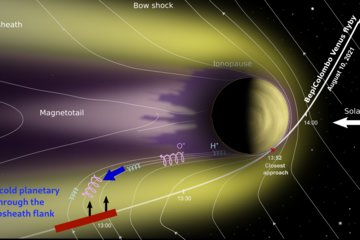All genres
161.
Poster
Tools of Thor - more than Mjolnir: An overview of some analysis methods for turbulence investigation. European Geosciences Union General Assembly, Vienna, Austria (2016)
162.
Poster
Tools for Thor: Selecting scales using wavelet transforms. Royal Astrononical Society Annual Meeting, London, UK (2016)
163.
Poster
Observation of the cold ion stagnation in the ionospheric outflow. European Geosciences Union General Assembly, Vienna, Austria (2016)
164.
Poster
High-latitude ionospheric convection from Cluster EDI revisited: interhemispheric differences and solar cycle effects. Geospace Revisited: a Cluster/MAARBLE/Van Allen Probes Conference, Rhodes, Greece (2014)
165.
Poster
Cold plasma density: asymmetries and solar cycle effects. Geospace Revisited: a Cluster/MAARBLE/Van Allen Probes Conference, Rhodes, Greece (2014)











